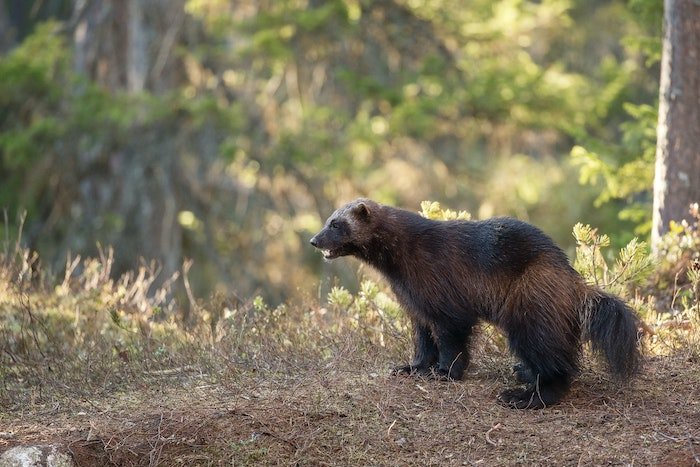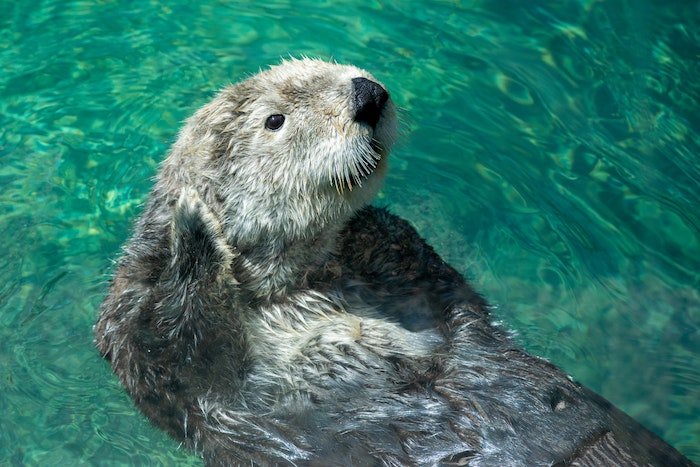Ferreting Out the Mustelids
Photo by Kedar Gadge on Unsplash
Mustelidae
by Inspector Barry Mins on December 13, 2022Hey kids, welcome back to our series on the mysteries of created kinds. Last week we met a very large type of organism. This week we’re still talking about mammals, but we’ve gone from massive to moderate. Some of these mammals are quite popular due to their playful personalities.

This kind is very diverse, with four basic subgroups. They are found throughout the world in most habitats, including the ocean in a few places. Diet is as varied as the habitats they live in. They eat fish,1 birds, reptiles, fungi, insects,2 rodents, fruit,3 crabs, sea urchins, clams, and snails.4 In some cases, the diet varies seasonally.5 Some members of the kind have been implicated as potential dispersers of seeds.6 At least one species is known to hunt in tandem with a member of the dog kind—coyotes.7 Others are known to cooperate with one another to solve problems.8
Some members of this kind are solitary, while others prefer small groups. One member is infamously standoffish and feisty, while others are gregarious, curious, and friendly. Some can undergo torpor during winter months, reducing heart rate and body temperature dramatically to conserve energy.9 During reproduction, some females are able to delay implantation of the embryo to wait for better environmental conditions.10
Has anyone figured it out yet? This week’s kind is the Mustelidae—the mustelids. Most of you probably don’t know what mustelids are, but you do know what wolverines, otters, ferrets, and badgers are. You’ve probably seen them in zoos, and some of you may have them in your backyard! Do you or a friend have a ferret for a pet? They are playful and fun to watch. Stay tuned for next week when we start looking for a very loud and exotic group of birds.
Clue
Your clue for the week is:
These birds get their name from a specialized structure atop their bills.
Ask a Question
Have you ever had a question about created kinds but didn’t know who to ask? Have you ever wanted to learn more about your favorite kind? Well, now you can! You can ask me, Inspector Barry Mins, a question! Have your parents help you fill out this form, and you might get your question answered in my column! If you have any questions about created kinds, feel free to send them my way!
Footnotes
- F. C. W. Rosas, J. A. S. Zuanon, and S. K. Carter, “Feeding Ecology of the giant otter, Pteronura brasiliensis,” BioTropica 31, no. 3 (September 1999): 502–506.
- W. J. Zielinski and N. P. Duncan, “Diets of sympatric populations of American martens (Martes americana) and Fishers (Martes pennanti) in California,” Journal of Mammalogy 85, no. 3 (2004): 470–477.
- M. Posłuszny, M. Pilot, J. Goszczyński, and B. Gralack, “Diet of sympatric pine marten (Martes martes) and stone marten (Martes foina) identified by genotyping of DNA from faeces,” Annales Zoologici Fennici 44, no. 4 (2007): 269–284.
- S. D. Newsome, M. T. Tinker, D. H. Monson, O. T. Oftedal, K. Ralls, M. M. Staedler, M. L. Fogel, and J. A. Estes, “Using stable isotopes to investigate individual diet specialization in California sea otters (Enhydra lutris nereis),” Ecology 90, no. 4 (April 1, 2009): 961–974.
- G. P. Cleary, L. A. L. Corner, J. O’Keeffe, and N. M. Marples, “The diet of the badger Meles meles in the Republic of Ireland,” Mammalian Biology 74, no. 6 (November 2009): 438–447.
- Y. Zhou, L. Zhang, Y. Kaneko, C. Newman, and X. Wang, “Frugivory and seed dispersal by a small carnivore, the Chinese ferret-badger, Melogale moschata, in a fragmented subtropical forest of central China,” Forest Ecology and Management 255, no. 5–6 (April 5, 2008): 1595–1603.
- S. C. Minta, K. A. Minta, and D. F. Lott, “Hunting Associations between Badgers (Taxidea taxus) and Coyotes (Canis latrans),” Journal of Mammalogy 73, no. 4 (November 20, 1992): 814–820.
- S. Duguid, M. Schmelz, M. Bohn, and C. J. Völter, “Cooperative problem solving in giant otters (Pteronura brasiliensis) and Asian small-clawed otters (Aonyx cinerea),” Animal Cognition 20, no. 1 (November 2017): 1107–1114.
- H. J. Harlow, “Torpor and Other Physiological Adaptations of the Badger (Taxidea taxus) to Cold Environments,” Physiological Zoology 54, no. 3 (1981): 267–275.
- M. D. Thom, D. D. P. Johnson, and D. W. Macdonald, “The Evolution and Maintenance of Delayed Implantation in the Mustelidae (Mammalia: Carnivora),” Evolution 58, no. 1 (January 2004): 175–183.
- © 2024 Answers in Genesis
- Privacy Policy
- Contact
- About



